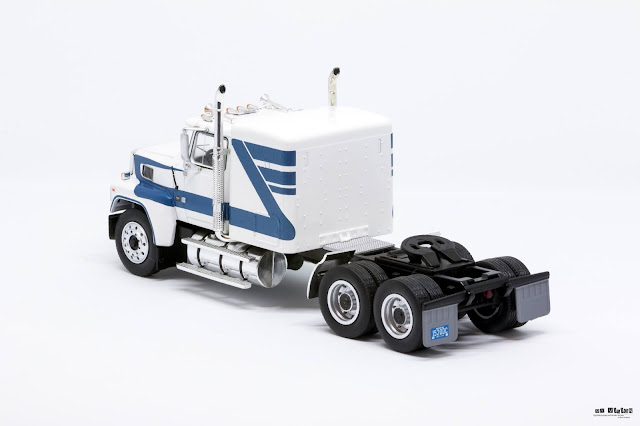During the 1970s, the company underwent further expansion, adding an all-new facility in Chillicothe, Ohio, in 1974. Kenworth added two new product lines in 1972, adding the C500 6x6 severe-service conventional and the Hustler low-cab COE (developed jointly with Peterbilt and produced in Canada). The same year, parent company Pacific Car and Foundry adopted its current name PACCAR.
Coinciding with the 50th anniversary of the company, annual Kenworth sales exceeded 10,000 for the first time for 1973.
For 1976, Kenworth launched a flagship customization series, the VIT (Very Important Trucker) with a high level of interior features; distinguished by its skylight windows, the Aerodyne sleeper cab was the first factory-produced sleeper cab with stand-up headroom (for both the W900 and K100). To commemorate the American Bicentennial, the VIT series was introduced in a limited-edition series of 50 (with each truck named after a state).
In 1982 and 1984, respectively, the W900 and K100 underwent their most substantial revisions, becoming the W900B and K100E. While visually distinguished by the adoption of rectangular headlamps, the updates were centered around upgrading fuel economy, road handling, and reliability.
In 1985, the Kenworth T600 was released by the company; in contrast to the W900, the T600 was designed with a set-back front axle and a sloped hoodline. While the latter initially proved controversial, the combination improved aerodynamics, fuel efficiency, and maneuverability. Intended as an expansion of the Kenworth model line, the success of the T600 would lead to the introductions of similar designs from multiple American truck manufacturers. In 1986, the T800 was introduced, adapting the sloped hoodline and set-back front axle for a heavy-duty chassis; the shorter-hood T400 was introduced in 1988 as a regional-haul tractor.
In 1987, Kenworth introduced the Mid-Ranger COE, its first medium-duty truck. Shared with Peterbilt, the Brazilian-produced Mid-Ranger was derived from the MAN G90 (a wide-body version of the Volkswagen LT). In 1992, the Mid-Ranger became the K300, as PACCAR shifted production to Sainte-Thérèse, Quebec.
In 1993, Kenworth opened its facility in Renton, Washington, as its third United States assembly plant.
In 1994, the T300 was introduced as the first Kenworth medium-duty conventional truck, adapting the T600 to a lower-GVWR Class 7 weight rating. The Aerocab sleeper was introduced, integrating the Aerodyne II sleeper cab and the drivers' cab as a single unit.
In 1996, Kenworth introduced the T2000 as its next-generation aerodynamic conventional. While not directly replacing the T600 and W900, the T2000 was a completely new design (the first from Kenworth since 1961). The first "wide-body" Kenworth conventional, the model shared its cab with Peterbilt, distinguished by its bumper-mounted headlamps.
In 1998, parent company PACCAR purchased British truck manufacturer Leyland Trucks, two years after Dutch manufacturer DAF Trucks (the two had been merged as Leyland DAF from 1987 to 1993). Within PACCAR, DAF would develop COE trucks for Kenworth and Peterbilt.























































